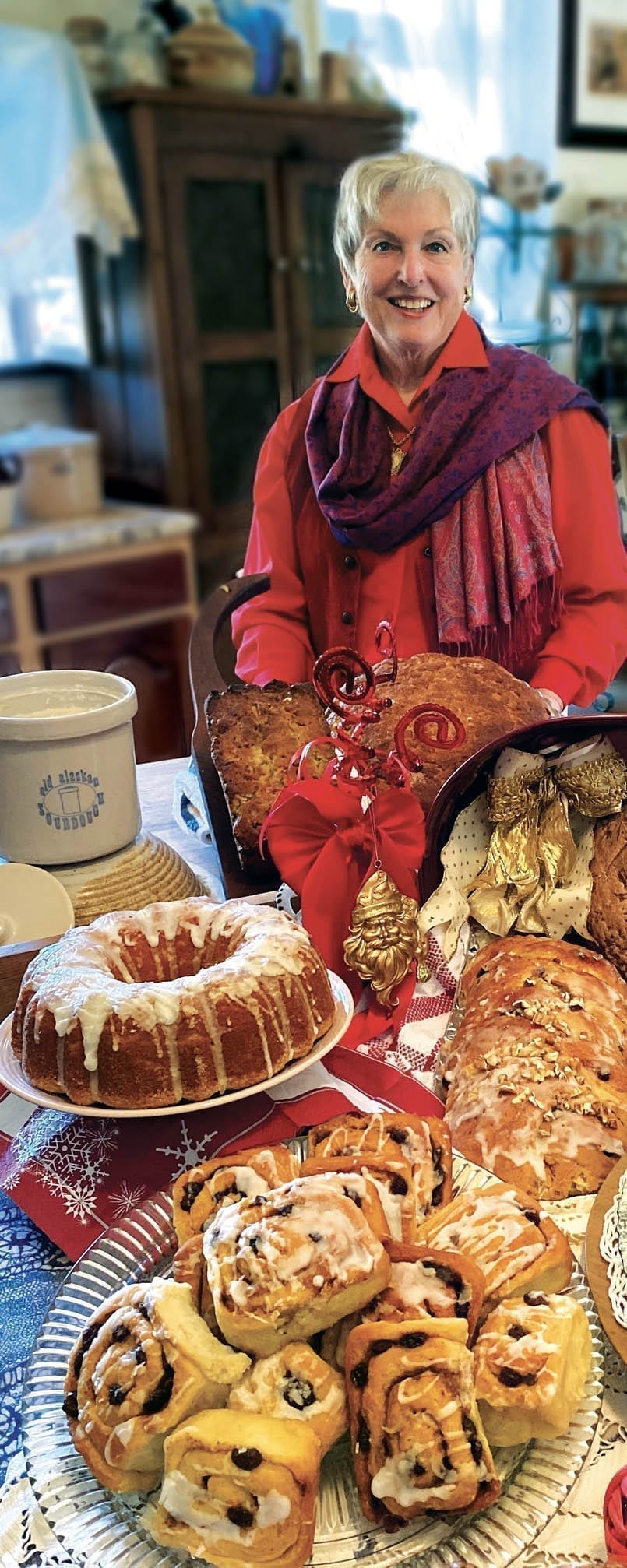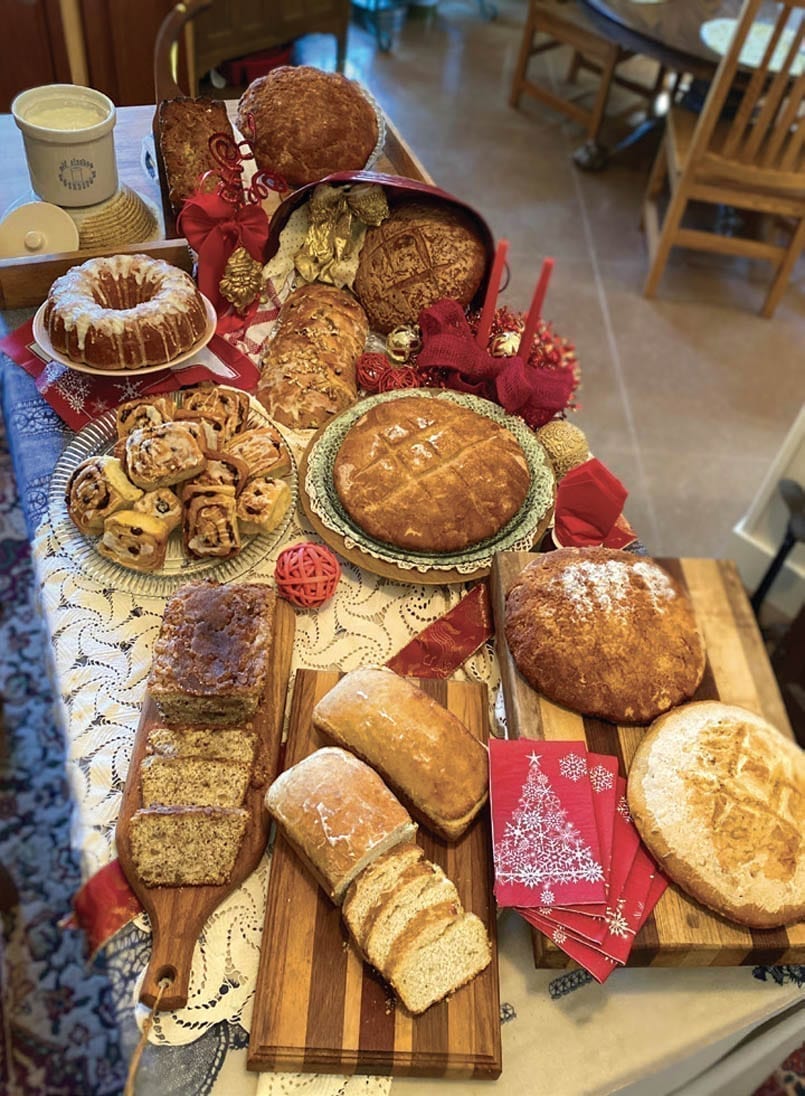30 Nov 2020 On a roll: After 51 years, bread starter still produces smiles

Photos and story by Stefanie Brazile
As fear of the coronavirus rose this year, so did a renewed love of home arts. People across the country spruced up yards and homes to the extent their DIY (do-it-yourself) talents would allow. Similarly, quarantine required more cooking at home and many people wanted to learn to make homemade sourdough bread, which begins with a healthy starter.
A 501 neighbor has bragging rights for a 51-year-old starter that began its journey on the West Coast, was flown to Florida, and eventually found its home in Central Arkansas.
Suzann Waggoner was living in Green Spot, Calif., with her husband and young son when she decided to experience the flavor of the Golden State, especially the famed sourdough bread of San Francisco. She opened her 1908 “White House Cookbook” and began the starter on the same day her first daughter was born — March 4, 1969.
“My daughter teases that I’ll never forget her birthday because of the starter,” Suzann said.
An award-winning artist of national acclaim, Suzann blends the old with the new in her spacious art studio in Mount Vernon. It has a full kitchen, large island and a variety of wooden boards that she uses to knead the dough, including her grandmother’s breadboard from 1916.
With a soothing, storytelling voice, she spoke about the necessity of bread starters, from the pioneers crossing the country on foot behind lumbering wagons to her modern small crockery pot, which is taken from the refrigerator every 10 to 14 days to make bread to share with neighbors, a 24-hour process. She explained that there are two kinds of starters. One is created from a mixture of soured whole milk and unbleached bread flour. The other is made from water, purchased yeast and flour.
“There’s a mystery about this starter,” Suzann said. “In the past, most everybody had a starter to work from. Even my 1879 recipe book said that everyone cooked from a ‘starter sponge’ to make good, light, sweet bread. This homemade yeast was made every few days to retain its freshness and flavor. It was never allowed to sour because the cookbook says, ‘Sour bread should never be eaten if you desire good health,’ … however, you think about those gold miners, that’s all they had.”
As she continued to tell stories about the importance of bread as a dietary staple of both pioneers and modern culture, sunlight drifted in windows and highlighted the island, which was filled with sourdough delicacies, including traditional and braided loaves, biscuits, cinnamon rolls, banana bread, fruit bread and two types of French bread.

“The bread is cooked at 450 degrees for 50 minutes,” she said. “If you let it go cold, it isn’t edible and you’ll have to saw it. It’s so hearty that you could put it into a saddlebag and it wouldn’t be harmed. They could rip off what they wanted, warm it, and it was delightful.”
A gifted storyteller, Suzann recalled visiting a San Francisco bakery 11 years ago with her son to learn how they made vast amounts of bread each day.
“I knew that starter (pointing to her small crock) wasn’t going to make a thousand loaves. They were making too much bread to have a starter that looks like that.
“I wandered outside and a man was leaning against the back door, smoking a cigarette, and everything he had cooked that day was in some representation on his apron. I asked if I could talk to him and he said, ‘Lady, as long as it’s not about sourdough.’ And I said, ‘Well, you’re out of luck. I need to know about your starter.'”
Another funny story is how she transported her small, lidded crock from the West Coast to the Sunshine State in her lap. In a time before airlines monitored every item brought onto a plane, Suzann carried it into airports, treating it like a small baby that had to be nurtured. Today, she is proud to have a delicious starter that is more than a half-century old. She is a bread expert with written advice on how to maintain a starter if it develops one of several problems, including “the sickies.”
People from as far away as Northern Missouri have traveled to get some of her liquid gold. In the meantime, she continues to open the simple crock a couple of times a month to pour out a cup, make the dough, and knead it by hand, just as the pioneers did 150 years ago.











